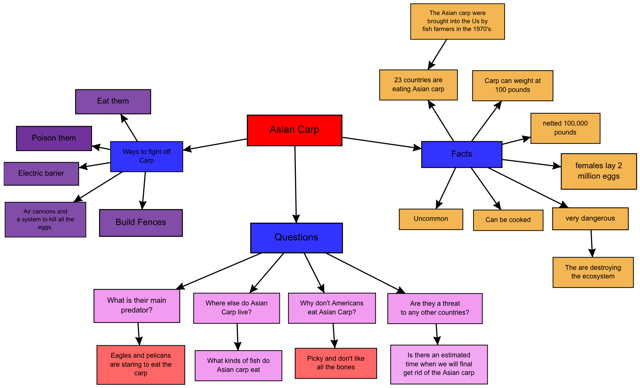Mike Jones, our Connecting Knowledge Grant winner and a STEM instructor and technology coach in the Bloomington School District 87 (Illinois), shares his insights on using Ideaphora in the classroom.
Formative assessments by the literary definition are pieces of data that allow teachers to measure where our students are at in their learning continuum. While it is easy to measure the more rote knowledge with short answers or multiple choice quizzes, finding ways to assess their understanding can be much more difficult.
I use the Ideaphora concept mapping environment in my classroom to allow my students to document and share their learning. When I first started using concept mapping, I mistakenly thought of it as a “one and done” activity. I would assign a resource and have students complete a concept map due the next day. Now, building a single concept map is a reflective process that we revisit often during a unit.

When looking at building a unit-long concept map, it is best to start small. Following the KWL (Know-Want to Know-Learned) model, I encourage students to document their current knowledge as separate nodes on their concept maps. Ideaphora has a color selecting tool that is great to use to mark previous knowledge in the nodes. Not all of these nodes will be kept during the unit.
I also allow students to create their nodes by dragging over images and keywords that are derived from resources in Ideaphora’s digital resource library to their maps before they’ve read or watched the materials. This enables me to see what students predict as important concepts and ideas before they start their research.
All of these nodes are placed or selected without making any connections yet; the purpose is to collect information and data. Students are encouraged to review their nodes and delete those they deem unnecessary to their research, which can be an overlooked aspect of the editing process.
In the next phase of the unit, students actively search for information. Not only are specific resources, such as videos and readings assigned, but I often add supplementary materials that I would like my students to explore. After they have collected data, the students are asked to make connections among their findings. This might require that the students take advantage of Ideaphora’s tools to change color and size of nodes to illustrate relationships between concepts and supporting evidence.
In Ideaphora, students can send multiple versions of their concept map to the teacher to allow progress monitoring and to check their understanding. Students can also take advantage of the narrative journaling tool to explain what their map means.
Students often struggle with organizing and reflecting on their thoughts. Ideaphora offers an easy-to-use concept mapping environment to visually document their learning and provides opportunities for teachers to coach their students during this process. Ultimately, students are engaged in self-assessment, while teachers can see their students’ thinking throughout the unit to promptly address individuals’ learning needs.
For an example of how Mike used this process in his classroom, see his grant-winning entry. If you are interested in using Ideaphora in your classroom, try it now for free, or sign up to participate in our free Classroom Pilot Program.

